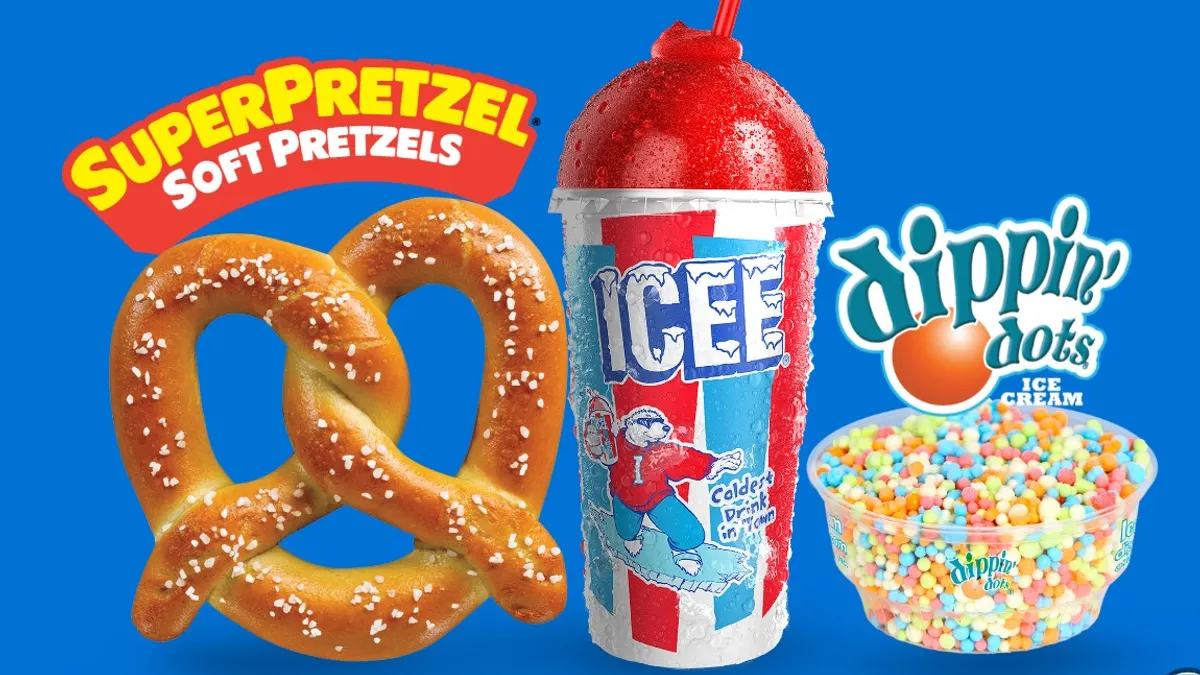With all the supply chain focus on personal protective equipment (PPE), one area is getting less notice: pharmaceuticals.
The U.S. places a lot of pharmaceutical eggs in one basket. Congressional testimony noted that 80% of active pharmaceutical ingredients (APIs) are produced abroad, mostly from China and India. In 2018, the U.S. imported 95% of its ibuprofen from China, in addition to 91% of the U.S. supply of hydrocortisone, 70% of its acetaminophen, 40% to 45% of its penicillin and 40% of its heparin.
Vitamin C and B12 are also ingredients sourced from China, said Nada Sanders, a supply chain management professor at Northeastern University. "India cannot make a lot of its antibiotics and a lot of its medications if it doesn't get sources from China," she told Supply Chain Dive.
When COVID-19 hit China, the country closed down or slowed some of its manufacturing, and that included pharmaceutical drugs and ingredients. As a result, India's government restricted export of some of its manufactured drugs and ingredients, including paracetamol (acetaminophen), antibiotics like tinidazole, erythromycin and neomycin, antiviral medication acyclovir, progesterone, and vitamins B1, B6 and B12.
"That scares me, more than not having toilet paper on the shelf."

Nada Sanders
Supply Chain Management Professor, Northeastern University
"India has simply said we'll cut down on the exports because we are getting less of the APIs from China, so we'll keep it for our own population. That has really become a major problem for us," Sanders said.
India exports about 20% of the world's generic medications by volume. Without enough in the pipeline, a shortage could begin this fall. Now that India is under a national lockdown, pharma manufacturing, logistics and exports face continued disruption.
"That scares me, more than not having toilet paper on the shelf," Sanders said.
Demand for 'game changer' chloroquine strains supply chain
The Food and Drug Administration is researching whether chloroquine, an FDA-approved drug to treat malaria, lupus and rheumatoid arthritis, can effectively treat patients with mild to moderate coronavirus. Anecdotal reports indicated the drug may show efficacy in shortening the illness and preventing its spread, although it's not medically validated, nor FDA-approved, to treat COVID-19.
Interest in the drug soared after President Donald Trump declared it was a "game changer" and some physicians are prescribing it off-label to their patients with COVID-19. But FDA Commissioner Stephen Hahn subsequently warned the public not to take chloroquine "unless prescribed to you by a health care provider & obtained from legitimate sources" he said in a tweet, after a man died from consuming chloroquine phosphate, which is used to treat parasites in aquarium fish.
The interest has caused a shortage of chloroquine in the U.S., including for those who need it for their FDA-approved conditions. The Wall Street Journal reported a 3,000% increase in U.S. hospital orders for chloroquine during March 1 to 17, and hydroxychloroquine (a chloroquine derivative) orders rose 260% in the same time period, compared to the usual orders.
Panic-buying and hoarding have ensued, and doctors and dentists are writing prescriptions for family members and themselves, according to NPR.
Will concentrated China, India sourcing create other medication shortages?
While most medications are readily available now, they may not be in a few months. The FDA announced in late February a shortage of one unnamed medication due to the manufacturing of an API in China. The FDA said there were alternatives to this medication, but has not provided additional information.
The fact that the bulk of sourcing and manufacturing for many medications is concentrated in China and India signals concerns for Sanders. "We're repeatedly told that the pharmaceutical drug companies have a couple months' supply, and the distributor holds a couple months, or at least 30 days," Sanders said. "That buys you two to four months, depending on the perishability." She said many are banking on the idea that as long as the world pulls through this in a few months, we'll be fine.

Sanders looks at Italy and China's protracted periods of illness so far, and "that's what makes me concerned, because this is not going away in a month or two," she said. "We need our government to work with China to make sure we have some supply coming in on the pharmaceutical end."
In early March, there were reports of a penicillin shortage from China, and the U.S. was trying to increase supplies from Europe and India.
Cutting back on elective surgeries presumably helps decrease antibiotic usage, but it's not a foolproof solution. "We don't know what percentage [of those with COVID-19] will get a secondary infection," Sanders said. If someone is allergic to an antibiotic, and there is a shortage of the ones that they can take, that creates a supply problem.
"India cannot make a lot of its antibiotics and a lot of its medications if it doesn't get sources from China."

Nada Sanders
Supply Chain Management Professor, Northeastern University
Indiana University Health is not experiencing any current medication shortages, Derrick L. Williams, executive director of logistics, said. The health system had to put saline solution on a manual allocation basis. "More patients are getting IVs, and demand has increased 10-fold at least," he said.
Hand sanitizer has also been in short supply. This item is also typically imported, though distilleries across the country are starting to make it domestically for the short term.
"This is an evolving story. So many of the things I said to companies two weeks ago are almost moot at this point," Sanders said.





















